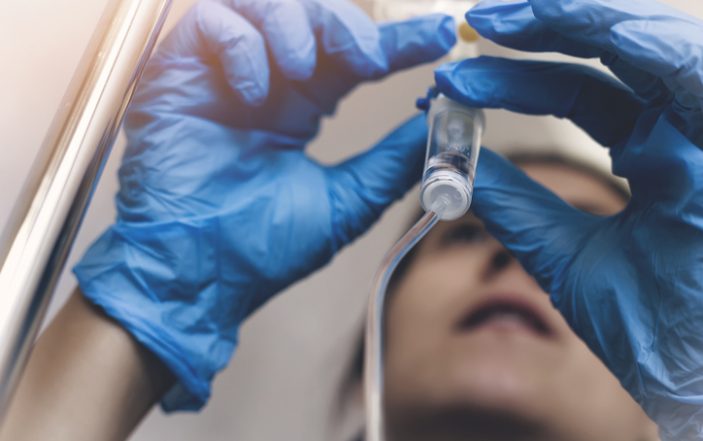Convalescent Plasma Therapy offers reasons for optimism in COVID-19 treatment.
Unfortunately, when it comes to treatment options for COVID-19, the results thus far have been far from promising. Convalescent plasma therapy (CPT) is not a new or novel therapeutic option. It involves taking the plasma from patients who have recovered from an illness and using it to treat patients who currently have the same illness. This approach has been evaluated in the treatment of SARS, MERS and Ebola, but none of the studies in these diseases showed definitive results. Recently, there were two papers published that may give us some signals of hope for CPT in COVID-19.
Rahendran K. et al [1] did a systematic review of five trials with a whopping total of 27 patients. All five studies found significant reductions in viral loads and increased neutralizing antibodies over time. Clinically, almost all patients showed improvement in body temperature, lung lesions, ARDS resolution and weaning from mechanical ventilation. Additionally, all five studies reported zero mortality and no adverse events. Clearly, 27 patients is far from a robust study group and while we cannot make definitive conclusions, the study gives us a potential therapeutic option that merits further investigation.
Recently, the first randomized clinical trial of convalescent plasma therapy was published by Li L. et al [2]. This was an open-label, multicenter, randomized trial at seven medical centers in Wuhan, China. Patients were randomized to CPT + standard treatment vs. standard treatment alone. In total, 103 patients were randomized. The authors were a bit bold in looking for a projected eight day faster clinical improvement, but a shorter timeframe would have required a much larger trial. Their primary outcome of clinical improvement within 28 days was seen in 51.9% of patients in the CPT + standard treatment arm vs. 43.1% in the standard treatment alone arm (not statistically significant).
The authors further divided patients into severe disease (respiratory rate ≥30 breaths per minute and/or O2 saturation ≤93% on room air and/or P/F ratio ≤300) and life-threatening disease (shock, organ failure or requiring mechanical ventilation). When looking at clinical improvement at 28 days in the severe disease cohort, CPT + standard treatment achieved this in 91.3% of patients vs. 68.2% in the standard treatment alone cohort (statistically significant).
In patients with life-threatening disease however, there was no statistically significant difference in clinical improvement at 28 days (20.7% vs. 24.1% respectively). This is not surprising as patients that received invasive mechanical ventilation were most likely in the hyperinflammatory part of illness, where we wouldn’t expect convalescent plasma therapy to have any effect.
Another important secondary outcome that bears mentioning was the 28-day mortality. In patients with convalescent plasma therapy + standard treatment, 28-day mortality was 15.7% vs. 24.0% in the standard treatment alone (not statistically significant). This is an 8% mortality difference! Again, this is not statistically significant, but this trend can have significant potential to benefit on a larger population level.
Unfortunately, this trial was terminated early after 103 of the planned 200 patients enrolled. This occurred due to containment of COVID-19 in China and therefore a decrease in available patients to enroll in late March 2020 (No new cases were reported in Wuhan for seven consecutive days after March 24). Additionally, what I think is the most bizarre aspect of this trial is the median interval between the onset of symptoms and randomization was 30 days (range of 20 to 39 days) overall.
Among patients with severe or life-threatening COVID-19, CPT added to standard treatment vs. standard treatment alone did not significantly improve the time to clinical improvement within 28 days. Early termination of this trial precludes any definitive conclusions, however, when looking at the subset of patients with severe disease there is some demonstration of benefit and requires future trials to confirm these findings.
In a time when we badly need therapeutic options to treat COVID-19, these results are far from definitive. They do give us a signal of hope that earlier treatment of patients, before they are in the hyperinflammatory phase of disease, along with convalescent plasma therapy could be an option moving forward.
As of June 7, looking at the clinicaltrials.gov website, it looks like there are currently 10 trials that are either actively recruiting or getting ready to recruit patients. Hopefully they will give us some valuable information and some good news.
References:
- Rahendran K et al. Convalescent Plasma Transfusion for the Treatment of COVID-19: Systematic Review. J Med Virol 2020. PMID: 32356910
- Li L. et al. Effect on Convalescent Plasma Therapy on Time to Clinical Improvement in Patients With Severe and Life-Threatening COVID-19: A Randomized Clinical Trial. JAMA 2020. PMID: 32492084



